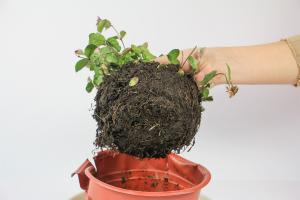How Deep Water Lily Plants
Water lilies are one of the most beautiful and fascinating plants found in lakes, ponds, and other freshwater bodies. They are known for their colorful flowers that float gracefully on the water's surface. However, their unique growth habits and requirements make them quite different from other aquatic plants.
The Growth Habits of Water Lily Plants
Water lilies are rooted in the muddy bottoms of lakes and ponds. They require a deep water bed to grow and thrive. Most species of water lilies grow to depths of three to six feet. However, some species, such as the giant water lily or Victoria amazonica, can grow to depths of up to ten feet!
Water lilies also require plenty of sunlight to grow. Their leaves and flowers float on the water's surface, which means they need to be exposed to sunlight for long periods. The leaves and flowers of water lilies can also function as shades, helping to reduce the amount of sunlight that reaches the water below, which can be helpful in preventing the growth of algae and other unwanted aquatic vegetation.
How Water Lilies Adapt to Their Environment
Water lilies have adapted to their aquatic environment in several ways. One of the most interesting adaptations is the way their leaves and stems are structured. Water lilies have fleshy rhizomes that anchor them to the mud at the bottom of the pond or lake. They also have long petioles, or stems, that elevate their leaves and flowers above the water's surface.
Water lilies have adapted to the changing water levels in their environment. When the water level in a pond or lake rises, the long petioles of water lilies flex, allowing their leaves to remain above the water's surface. When the water level drops, the petioles become rigid, keeping the leaves close to the surface of the water.
How to Grow Water Lilies in Your Pond
If you have a pond or lake on your property, you may want to add water lilies to your aquatic garden. Here are some tips on how to grow water lilies:
Choose a sunny spot in your pond or lake for your water lilies.
Plant your water lilies in a container filled with loamy soil and aquatic plant fertilizer.
Place the container at a depth of three to six feet, depending on the species of water lilies you are planting.
Be sure to fertilize your water lilies regularly to ensure healthy growth and blooms.
The Beauty and Fascination of Water Lilies
Water lilies are not only beautiful, they are also fascinating plants that have adapted perfectly to their watery environments. Their unique growth habits and requirements make them a joy to observe and appreciate. If you have a pond or lake on your property, consider adding water lilies to your aquatic garden. They will add color, interest, and charm to your backyard oasis.

 how many times do yo...
how many times do yo... how many planted tre...
how many planted tre... how many pine trees ...
how many pine trees ... how many pecan trees...
how many pecan trees... how many plants comp...
how many plants comp... how many plants can ...
how many plants can ... how many plants and ...
how many plants and ... how many pepper plan...
how many pepper plan...
































